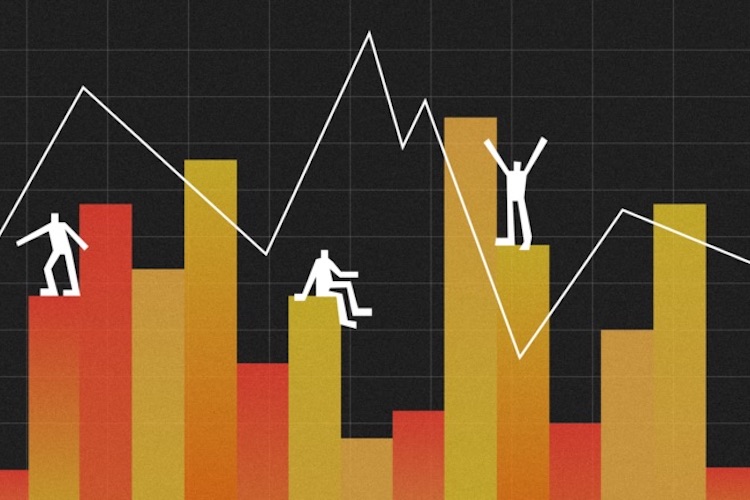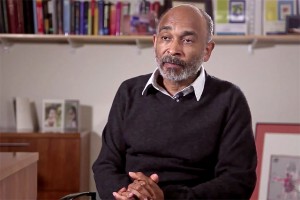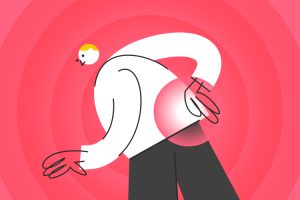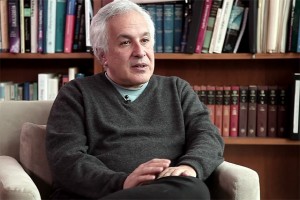Propofol as a Widely Used Anesthetic
Neuroscientist Emery Brown on anesthetics' oscillation, propofol, and anesthesiology as a part of clinical neu...

Money is a very complex social phenomenon, and in general, neuro economists – unlike economists, sociologists, and psychologists– have a very partial and undeveloped view of what money is. They don’t study it for itself and think it is a substitute for reward, which is convenient to use in experiments because they consider it allegedly presents no satiation effect. Therefore, money is understood in terms of reward and incentive. If we scrap a little further under that conceptually feeble crust, we will find an interesting opposition between money as a tool and money as a drug that was proposed by Lea and Webley in 2006. This duality of money is conceived in two different ways, in which something that is initially not of a biological nature can become a powerful reinforcer and has deep neurobiological effects. This can provide a sense to the exclusive study of money as a reward from a neuroeconomic perspective. We can better understand how a secondary reinforcer can become a primary one and how a cultural artifact can acquire the neural features for the fulfillment of biological needs.
But the reward is not all. Neuroeconomics can provide genuine insights into the more complex nature of money. Such cultural items as money can become universally accepted by human societies if the brain develops some invariant accommodation of this particular artifact beyond its rewarding value. There must be something that is linked to the way money – in possibly several archetypical forms across history and cultures – is universally accepted. This could be a purely functional thing, as money fulfills a series of functions in an exchange economy, and this is why it arose and spread. But it could also be some particular way in which we grant values to specific objects. As neuro economists are particularly interested in the neural correlates of value and reward, they should try to understand how the brain grants value – sacred, economic, symbolic– to an initially valueless object.
The results we have reached with C. Tallon-Baudry and F. Meyniel in our 2011 study show that the visual system area in the brain decodes conventional symbolic aspects of money in a way that is similar to its processing of natural items, such as foods and faces. In order to process this highly symbolic aspect of money, the brain has recycled old neural circuits dedicated to the processing of natural items to process money. This is a rather indirect way to realize how money – even from a biological perspective – is central to our lives.
Nobel Prize winner for economic sciences James Heckman proposes a cross-disciplinary examination of human capital, combining economics, developmental psychology, and neurobiology, which are apt to reveal that early experiences have an influence on cognitive and social skills, brain architecture, and neurochemistry. In that sense, the brain is shaped by macroeconomic environments, and the connection between this seemingly insulated organ and the economic parameters that define its environment has crucial significance.
Moreover, neuroeconomics, with its usual methods, in its usual conception, may address macroeconomic phenomena and typically monetary ones. First, there is a sub-branch of experimental economics – experimental macroeconomics, which has precisely been promoted by researchers interested in monetary theory (e.g., John Duffy). Such research goes along two main lines – the study of aggregation of effects and the study of rational expectations given aggregate data. Money illusion can illustrate both aspects.
At the individual level, money illusion is defined by cognitive rigidities in the perception of nominal prices with respect to real values of goods or wages, for instance. One can study the psychological and neural mechanisms involved in this type of rigidity. By doing so, one will find himself connecting money with basic neural and cognitive abilities, such as reward and number processing. The question is what is particular in the way money taps into those mechanisms. What will typically interest the “pure” economist is whether this prevents the individual from making rational anticipations given an announced inflation rate and whether there are some aggregate effects of individual illusions. My position on this dual issue is that there is an effect (namely, repeated market interactions do not necessarily tend to make money illusion vanish) and that a model of rational expectations should incorporate a coefficient of money illusion.
In 1947 Jerome Bruner, a representative of “new look psychology”, which had already become out-fashioned, ran an experiment in which rich and poor children were presented with coins of different values and were asked to estimate their sizes. Poor children overestimated the size of the coins compared to rich children and compared their estimation of non-monetary disks. For Bruner and his school of psychology, this was evidence in favor of the fact that perception is top-down modulated by higher-level cognitive or affective factors, such as the economic background. More generally, values and needs are considered as “organizational factors of perception”. This is not the case for all perceptions of objects if those objects are not value-laden.
In an unpublished experiment, Malika Auvray wondered whether such an effect could counterbalance visual illusions such as the Ebbinghaus illusion:

The red circles have the same size but do not seem to be so because of the surrounding circles. Now imagine we replace the central circles with coins of different values. If the value of the coin on the left is higher than the one on the right, the visual illusion can be counterbalanced.
Much more can be said about the particular way we perceive money in contrast with other objects. The perception of money (coins of different currencies) in terms of neural processing involved is more similar to the recognition of faces than the recognition of a word in one’s natural language. The latter takes 450 milliseconds, while the former, as well as coins recognition – 150 ms.
In one of the experiments, subjects were asked to click on the computer mouse each time they saw one of the following stimuli (B, C) twice in a row in a typical visual one-back task (D).

Coins were factorized according to their familiarity with the participants and according to their intrinsic validity (current purchasing power). MEG measures were taken for coins, which revealed that they were visually categorized by the ventral stream according to their validity rather than their familiarity. It means that what drove this perceptual categorization was a high-level, abstract, and socially conventional feature, independently of reinforcement through practice and acquaintance. This is certainly a special way in which money is perceived and interacts with our neurobiological visual system compared with other artifacts.
Regular human detectors cannot recognize counterfeit money – certain professional expertise is required. However, evolutionary cognitive psychologists Tooby and Cosmides have documented the hypothesis of a cheating detection module in our minds. Due to evolutionary pressure, we have a special ability to detect cheaters and liars. This does not carry over to artifacts, such as money. However, when these artifacts are handed to us in social interactions, we may lend to the artifact itself what we feel or detect about its carrier. This is why it is so annoying when a clerk checks the bill we hand to him. We take the implicit accusation for ourselves.
There are differences in how the brain perceives money exchange and other forms of exchange. This confirms the fact that monetary exchange and gift exchange are recognized as different processes, although gifts are not always based on sheer generosity. It is a staple of early 20th-century ethnology to have documented the status issues and expectations of recognition and gratitude involved in gifts in Pacific traditional societies. Money exchanges are based on anonymity and do not involve such hierarchical and prestige issues. Money is a social equalizer from this point of view, even though it creates a financial stratification of its own, which can replace traditional orders.
In connection with these sociological issues, one can relate to the work that has been performed in neuroeconomics about “warm glow”. The warm glow is this feeling of having done something good, altruistic, and generous. There is a small sub-branch of neuroeconomics – or rather hormonomics – that is busy with the neural correlates of charity, philanthropy, and altruism.
Reward and risk are basic components entering the way the brain can process money. A bottom-up methodological and conceptual understanding of money means that the study of money is focused on a unique question for which brain-imaging studies can help to find an answer: what are the minimal cognitive abilities required for money to emerge, be used, and stabilized as a functional economic artifact?
This bottom-up approach is to be contrasted with a top-down understanding of money, which consider money as something used as a mean of payment and exchange from the moment a central authority recognizes it as valid. Within the bottom-up approach, a major question is whether a pure reinforcement model is sufficient to explain money emergence or whether other parameters (such as strategic anticipation, social learning, imitation, etc.) could be required.
Having simulated several models, I came up with the interim conclusion that provided an established structure, basic reward-based abilities are sufficient for a society of such “primitive” agents to reach a monetary equilibrium. Of course, there is a trade-off between the level of cognition you require and the type of environment structures in which they evolve. The environment here consists of transaction-matching probabilities, market structures, types of agents, etc. The more it is structured in a way that favors fruitful exchanges, the less the agent has to anticipate and thinks about his actions.
Those environments are the endogenous outcome of human activities, equilibria by themselves, or dynamic processes tending towards some equilibria. This is why it is interesting to test basic hypotheses of money emergence in non-human primates. Macaques, for example, are good experts in probability processing, but they hardly perform beyond correct associations of risk and reward and have difficulties stocking goods in order to earn more value in a context of success-reward volatile associations. Risk and reward processing certainly form building blocks of money understanding and use, but if a species has not built throughout its evolution a structured environment in which those basic abilities can be aptly channeled, the emergence of money remains very hypothetical.
Depending on the experimental question, particular mechanisms can be observed and associated with money processing (whether in manipulation, recognition, use, etc.), but none of them are unique to money. The ventral striatum, which is associated with the reward system, is primarily activated when a person interacts with money and similar stimuli. There are also more specific mechanisms that are activated during the processing of monetary stimuli. Nevertheless, they are still shared with other items processing. The important issue is to understand why they are shared.
There is a fundamental reason for this. Money is a recent cultural item, only 7000 years old. During that rather short period, any anatomical modification could not happen with our brain, and a specifically dedicated area (the “money area”) could not have formed with respect to money. It is more likely that some cultural cortical recycling took place, and some old evolutionary-driven neural pathways were recycled for relatively specific processing of money, sharing these functional features with what this pathway was primarily dedicated to.
There are many inter-individual and intercultural differences in attitudes toward money. To measure these attitudes on a personal level, psychologists have developed scales and questionnaires. In doing so, they usually try to combine a variety of psychoanalytic accounts and basic socio-economic factors such as daily use of budget, emotions raised by money, etc.
Cultural or social factors only cannot provide a fully satisfactory explanation as well. Social scientists see money as an anthropological invariant in spite of its cultural and social variety. However, psychological factors have deeper explanatory power. Personality traits seem directly correlated with money attitudes, but the predictions are still difficult to make: are compulsive or addictive individuals likely to spend more or to spare? What about extraversion and introversion?
Donnelly in 2012, has shown a paradoxical fact that individuals who believe that possessions can provide happiness – in other terms, materialists – manage their money less. They state that these individuals deliberately or unconsciously experience the pain of knowing about their financial status and that money management implies too much of a reality check for them in terms of their actual purchasing power. Therefore, the psychological exploration of money attitudes demonstrates the complexity and variety of human behavior.
Young and old people perceive money differently. A recent study of the Money Advice Service showed that money attitudes are fixed in children through the financial habits of their parents in a certain way. At the age of seven, children realize what money is for, how to spend it, plan monetary expenses ahead, to recognize the irreversibility of financial operations. These early acquired attitudes were shaped by parental influences and are likely to last during the rest of individuals’ lives. One thing children of this age miss is the understanding of the difference between ordinary (necessary) goods and luxury ones – they are not smart buyers.
I believe that the concept of money is understood earlier in the child’s development, at the age of 3 or 4. When I have the opportunity to meet little children, I ask them to throw away in the trash a few items, such as a pen, a fruit stone, and a valid coin. When they refuse to throw the pen away, I explain that it does not work anymore, and they check. When I ask them to throw away a coin, they generally refuse to get rid of it and think that I am playing a game with them. So, it is hard to tell what money is for these very young kids, but for sure, they understand its value before they can count.
There are certain disordered money behaviors that can correlate with psychiatric conditions. The usual list includes compulsive buying, pathological gambling, underspending or compulsive hoarding, financial dependence, financial denial, and a few other conditions. There are many studies about disordered money behaviors. This stems from an old psychiatric interest of the German psychiatrist Kraepelin, who was the first to diagnose compulsive buying in his article “Manifestations of Insanity”.
There is a more recent Forman’s money pathology scale. Using this scale, some studies attempted to establish which individual difference factors predicted the different types of money pathology. Based on this scale, Furnham and Okamura came up with a conclusion that females are more prone to depression but less likely to take moral risks for money; that richer and more right-wing people tend to be more materialistic; people with overall less “money sanity” tend more to believe that luck and dishonesty are more important in making money; economically pessimistic have powerful negative emotions like anger and anxiety around money.
Cryptocurrencies barely present radical conceptual innovations, only technological ones. The famous Yap stone money, which are huge stones extracted in mines 300 hundred miles away from the Yap island and then brought in on fragile canoes, were symbolic and material referents of transactions. People knew which part of the stone belonged to whom. It functioned like gold in a federal reserve at the time of the gold standard. There are a referent and an archive, and there is a costly mining process, which gives its value to the coin. Doesn’t it sound like Bitcoin?
What is common to these two types of money implementation (and to all types of money) is that the informational aspect of money has, in fact, to be associated with a materialized device. Credit cards and cryptocurrencies are not dematerializations of money, unlike what common sense affirms. They are new technologies of material information. In order to implement information somewhere – be it some “virtual” archive or some abstract series of numbers – money cannot be completely dematerialized. If it becomes completely so, it would mean that money is simply information, but information can be indefinitely duplicated at almost no cost if it is not associated with a material (including electronic) support, which precisely prevents indefinite duplication. Money has to be scarce and not proliferate, unlike information. Money is materialized information (memory, accounting tracks, archives), but the information in itself is not money without its implementation in a material system.
What changes, however, is the relationship we have with the different materializations of money. It has been shown in simple psychological experiments that the fact that we don’t feel the physical properties of money contributes to changes in our economic behavior – e.g.; we spend more on credit cards than on bills. This is slightly linked to the question of the volatility of gains and losses that you raise. Money that is not earned through effort or the impression of effort has less subjective value than the one we think we deserve.

Neuroscientist Emery Brown on anesthetics' oscillation, propofol, and anesthesiology as a part of clinical neu...

Psychologist Mark Lumley on behavioral dysfunction, categorizing pain, and the effects of psychotherapeutic tr...

Harvard Professor Jeff Lichtman on revolution of fluorescent proteins, brainbow as a technique in connectonomi...